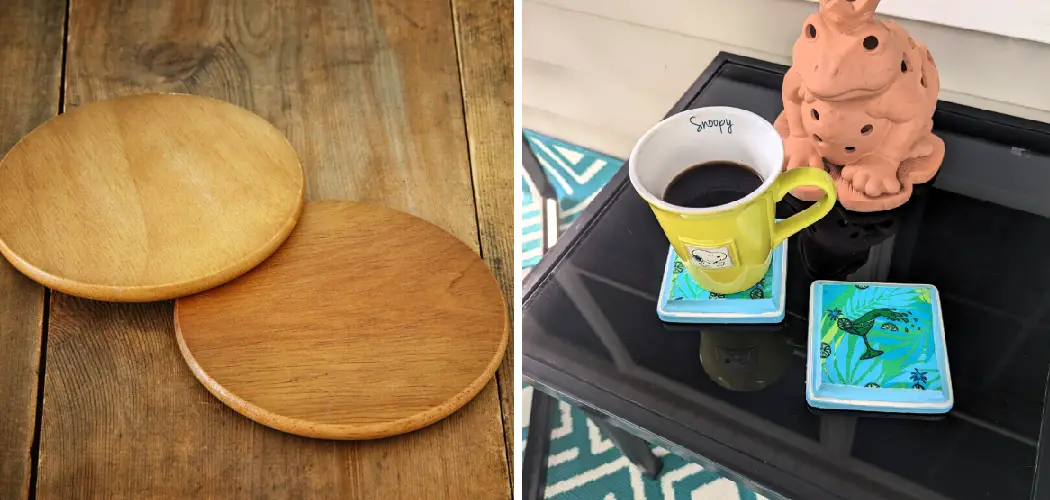Coasters are essential home accessories that protect your furniture from water stains and spillage rings. But if your coaster is not waterproof, it can easily become useless in avoiding damage to your table or countertop. A waterproof coaster is more durable and can last for a long time. Here are some practical tips and tricks on how to make coasters waterproof, so you won’t have to worry about buying a new set.
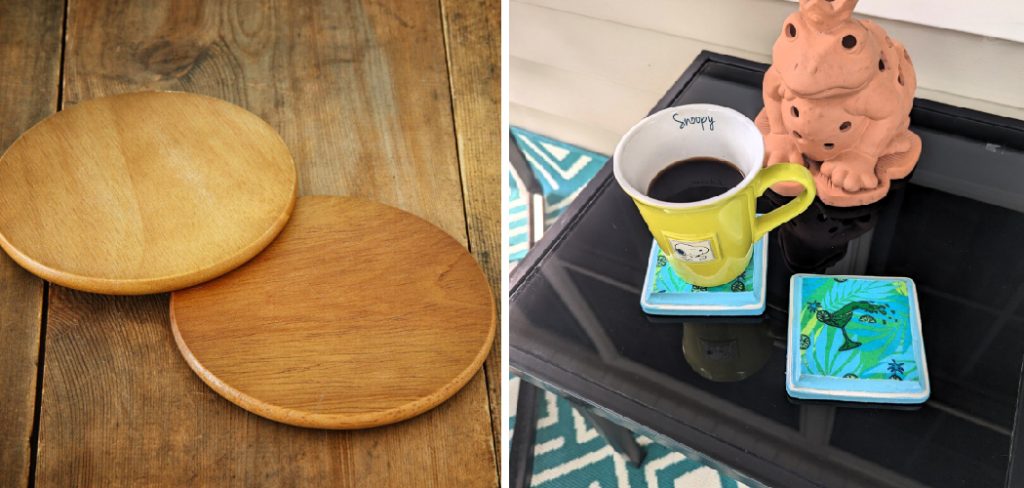
Can You Make Coasters Waterproof?
When it comes to having guests over for drinks, coaster etiquette is often a hot topic. But what happens when the coasters themselves become a source of stress? If you’ve ever been frustrated by a water-stained coffee table or a ruined end table, fear not – there’s hope for your coasters yet.
By utilizing a few simple steps and materials, you can ensure your coasters are truly waterproof. Not only will this save you from future worries, but it may also be a fun and easy DIY project. So why not try it and see how much more enjoyable your next dinner party can be?
Why Should You Make Coasters Waterproof?
Whether you have expensive wooden furniture or paper-based items that you wish to protect, making your coasters waterproof is a smart investment. Not only will a waterproof coating prevent unsightly water stains or damage, but it also ensures a longer lifespan for your coasters.
You also won’t have to fret about any spills or condensation from hot or cold drinks, as they will bead up and wipe away easily. Plus, waterproof coasters can be used for outdoor picnics or BBQs without the fear of them getting drenched during a sudden rainstorm.
In short, investing in waterproofing your coasters is a small but worthwhile step in keeping your home’s decor safe and looking its best.
How to Make Coasters Waterproof: Practical Tips and Tricks
1. Seal the Surface
One effective way to make your coaster waterproof is by sealing its surface. You can use Mod Podge, a water-based sealer, glue, and finish in one. Apply a thin, even layer of Mod Podge on the coaster, let it dry, and then apply another layer. Repeat the process until you have coated the coaster evenly. Once you have sealed the surface, your coaster will not absorb liquid spills and remain spotless.
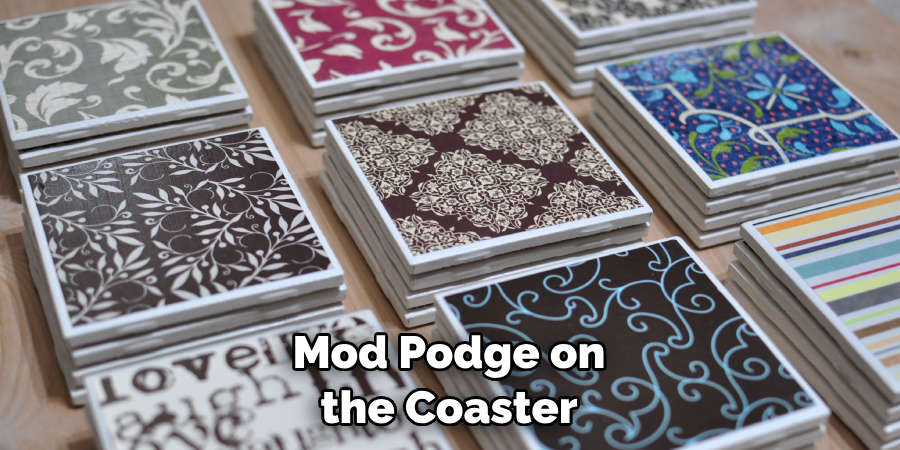
2. Use Epoxy Resin
Another way to make your coaster waterproof is by using epoxy resin. Epoxy resin is a two-part adhesive, and when mixed, it creates a hard, glossy, and durable surface that is resistant to water, heat, and other substances. Epoxy resin is relatively easy to use but you must follow the instructions carefully.
Firstly, cover the surface with a layer of epoxy, let it dry, and then add another coat. It is essential to remove bubbles when applying epoxy resin. You can use a torch or a heat gun to remove the bubbles and create a smooth surface.
3. Plastic Laminate
Plastic laminates such as clear vinyl or self-adhesive vinyl can also make your coaster waterproof. You can apply the laminate by cutting it to the size of the coaster, peeling off the backing, and sticking it on. Plastic laminate is excellent because it is easy to clean when dirty.
4. Use Silicone
You can use silicone adhesive to make your coaster waterproof and prevent damage to your furniture. You can apply a thin silicone adhesive layer at the bottom of the coaster, let it dry, and then apply another layer. It will create a non-slip surface and make the coaster waterproof.
5. Use Tile Grout
Tile grout is an excellent option for making your coaster waterproof. You can use sanded or unsanded grout to fill the gaps between the tiles, creating a smooth and waterproof surface. Apply the grout evenly with a scraper, dry it for 24 hours, and polish it with a cloth. Once it is dry, the coaster is waterproof and easy to clean.

6. Apply a Varnish
Varnish is another excellent option for making your coaster waterproof. You can apply a thin layer of varnish on the coaster, let it dry, and then add another layer. Once you have applied enough layers, the varnish creates an impervious surface that prevents water from penetrating the coaster.
7. Use Simperviousray Paint
Spray paints are also an effective way to make your coaster waterproof. You can apply spray paint specifically designed for polyurethane over the coaster. Polyurethane is a type of plastic that creates a durable and waterproof surface when applied over wood, metal, or other materials. Make sure you cover the entire coaster with paint and let it dry.
These tips will help you make your coasters waterproof so they won’t get damaged by water or other liquids. Remember that these solutions are not permanent, so you should periodically check for signs of wear and tear and reapply the sealant if needed. With proper care, your coaster will remain waterproof and look great for a long time.
5 Considerations Things When You Need to Make Coasters Waterproof
1. Sealant
The first consideration when making coasters waterproof is to use a sealant. Sealants are liquids or sprays that can be applied to the coaster’s surface to create a protective barrier against water. They come in various types, such as acrylic, epoxy, and polyurethane. When applying the sealant, it is important to ensure all surfaces are completely covered for maximum protection.
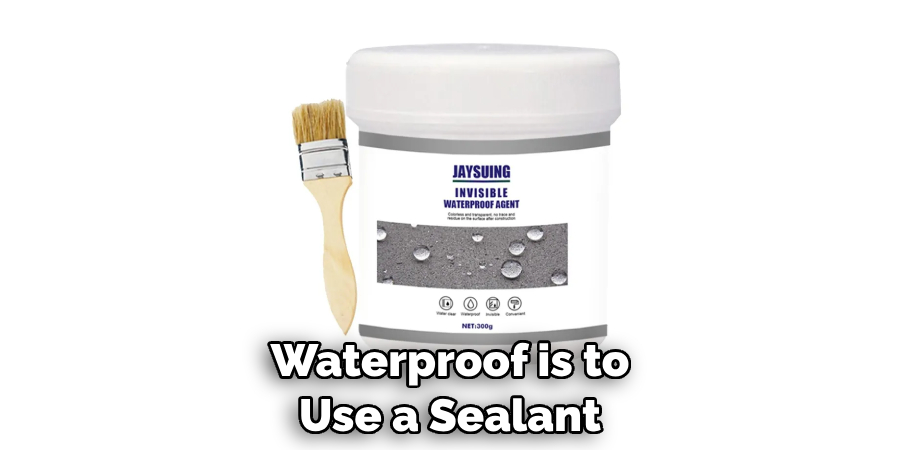
2. Coating
Another option for making coasters waterproof is to apply a coating. Coatings can be made from various materials, such as waxes, polymers, and resins. These coatings provide an additional layer of protection against water and other liquids. It is important to apply the coating evenly and thoroughly to ensure maximum protection against water damage.
3. Waterproofing Agents
Several waterproofing agents are available on the market that can be used to make coasters waterproof. These agents typically contain special chemicals that help prevent water from penetrating the coaster’s surface. It is important to read the instructions carefully before using any waterproofing agent, as some may require multiple applications to achieve optimal results.
4. Heat Treatment
Heat treatment is another method of making coasters waterproof by applying heat directly to the coaster’s surface, which helps seal any gaps or pores in its material composition and prevents water from penetrating. This method requires specialized equipment and should only be done by professionals with experience in this area for the best results.
5. Lamination
Lamination is another option for making coasters waterproof by covering them with a thin plastic film or sheet which seals out moisture and prevents it from entering into the coaster’s material composition while still allowing air circulation underneath it so that it does not become too hot or cold over time due to temperature changes outside its environment.
It is important to note that lamination can cause discoloration of the coaster over time, so it may not be suitable in all circumstances.
These are just some of the considerations when making coasters waterproof. Other methods, such as using silicone caulk or applying a sealant or coating to only part of the coaster, may also be used depending on the desired outcome and budget.
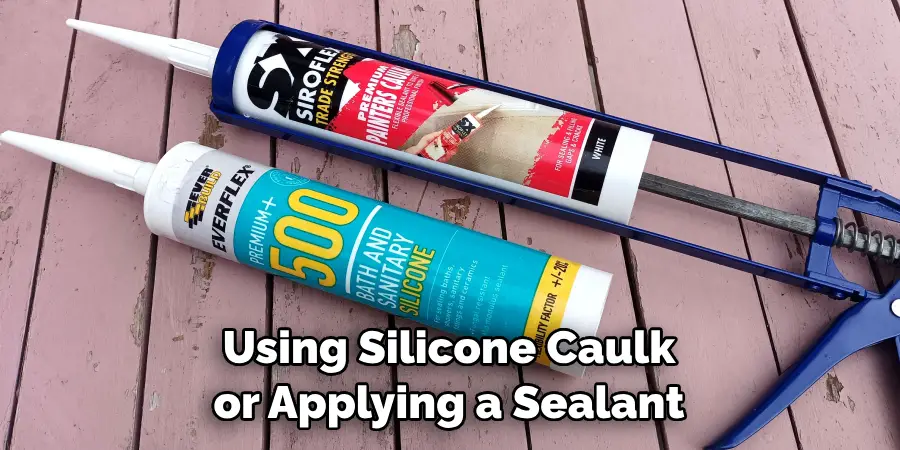
Regardless of the method, it is important to ensure all surfaces are completely covered for maximum protection against water damage. These steps will help ensure your coasters remain waterproof even after long-term use.
Benefits of Making Coasters Waterproof
There’s nothing worse than curling up on the couch with a hot cup of tea only to realize that your coaster isn’t up to snuff. But fear not because the benefits of making coasters waterproof are plentiful!
Not only will you no longer have to worry about water damage and unsightly rings on your furniture, but you’ll also be able to protect your coasters from spills, sweat, and general wear and tear. This means you’ll be able to use your coasters for years to come without replacing them constantly.
And let’s not forget the bonus of being able to easily clean and sanitize your waterproof coasters – perfect for those of us who are a little on the germophobic side. Whether you’re a frequent host or just someone who enjoys a cozy night in, waterproof coasters are a game-changer that offers both practicality and style.
Some Common Mistakes People Make When Trying to Make Coasters Waterproof
Making coasters waterproof is a challenge that many people face. However, there are some common mistakes that people make that can render all their efforts useless. One major mistake is assuming that any sealant can provide waterproofing. This is not always the case because some sealants may not be effective against water.
Another mistake is not letting the coaster dry completely before applying a waterproofing agent. This can result in an uneven coating that can be easily peeled off. A third mistake is not using a high-quality waterproofing agent.
Some people may opt for the cheapest product on the market without considering its effectiveness. To ensure that your coasters are waterproof, it’s important to avoid these mistakes and follow proper waterproofing procedures.
Conclusion
Waterproof coasters are practical and essential home accessories that can make your life easier. There are various ways to make your coaster waterproof, including sealing the surface, using epoxy resin, plastic laminate, silicone, and tile grout.
Following the tips and tricks outlined in this article, you can make any coaster waterproof and enhance its durability. No more worrying about those water stains and spillage rings that can affect your furniture. Make your coasters waterproof, and enjoy your drinks with peace of mind! Thanks for reading our post about how to make coasters waterproof.
You Can Check It Out to Crochet a Sunflower Coaster

